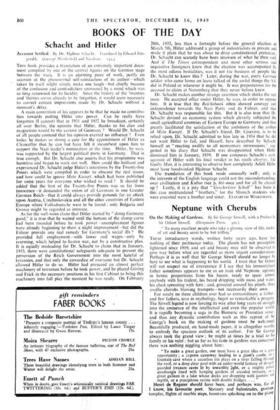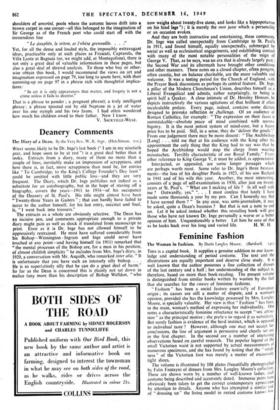Neptune with Cherubs
On the Making of Gardens. By Sir George Sitwell, with a Preface I,
Sir Osbert Sitwell. (Droprnore Press. les.)
" To many excellent people who take a gloomy view of life, stitch: of art and beauty seem to be but trifling."
THESE introductory words, written forty years ago, have nothing of their pertinence today. The gloom has not perceptibl, lightened since 1909, and art and beauty may still be observed give way before what are regarded as more urgent consideration, Perhaps it is as well that Sir George Sitwell should no longer here to see what is happening to his world. I trust that Sir Osber will not suspect me of irreverence if I say that his immortalised father sometimes appears to me as an irate old Neptune, uprising in heroic proportions from his bussin. ready to spear almos! anybody with his trident, his beard dripping with moss and water. his chest sprouting with fern ; and. grouped around his plinth. three jonffin cherubs blowing trumpets—not necessarily their own. For surely no three children ever had so extraordinary a father and few fathers, save in mythology, begot so remarkable a progeny. The Sitwell legend is now forcing its way after long years of strii,,le into the eminence of the intellectual and even the popular world It is rapidly becoming a saga in the Homeric or Proustian sense and thus any dynastic contribution such as this reprint of Sr' George's book on the making of gardens must be welcamed Beautifully produced, on hand-made paper, it is altogether worth\ to embody the spacious outlook of its author. For Sir Georg: always took the grand view ; he might at times be a trial to hi, family or his valet ; but so far as his taste in gardens was concerns there was nothing niggling about him: -To make a great garden, one must have a great idea or a grec opportunity ; a cypress causeway leading to a giant's castle. of fountain cave where a ceaseless iris plays on a river falling throur the roof, or a deep clear pool with an under-world fantasy of dragor guarded treasure caves lit by unearthly fight, or a mighty palAc: quadrangle lined with hanging gardens oarcaded terraces, 01 great galleon in a lake whose decks are dropping with jasmine 3n2 myrtle, or a precipitous ravine with double bridges.... " Henri des Regnier shoutd have been, and perhaps was, for all I know, his favourite poet. Statuary and balustrades. grottoes temples, flights of marble steps, fountains splashing on to the plumf shoulders of amorini, pools where the autumn leaves drift into a brown carpet in one corner—all this belonged to the imagination of Sir George as of the French poet who could start off with the tremendous line
" Le dauphin, le triton, a l'obese grenouille. . . ." Yet, for all the dense and loaded style, the impossibly extravagant ideas, practicable only at such places as Frascati, Caprarola, the Villa Lante at Bagnaia (or, we might add, at Montegufone), there is not only a great deal of valuable information in these pages, but also a great deal of shrewd analysis. To those who buy or other- wise obtain this book, I would recommend the views on art and imagination expressed on page 79, too long to quote here, with their summing-up on page 97 in a phrase rich with thoughtful implica- tions:
" In art it is only appearances that matter, and forgery is not a crime unless it fails to deceive."
That is a phrase to ponder ; a pregnant phrase); a truly intelligent phrase ; a phrase spouted out by old Neptune in a jet of water over his one nymph and his two fauns. I had often wondered how much his children owed to their father. Now I know.
V. SACKVILLE-WEST.



































 Previous page
Previous page